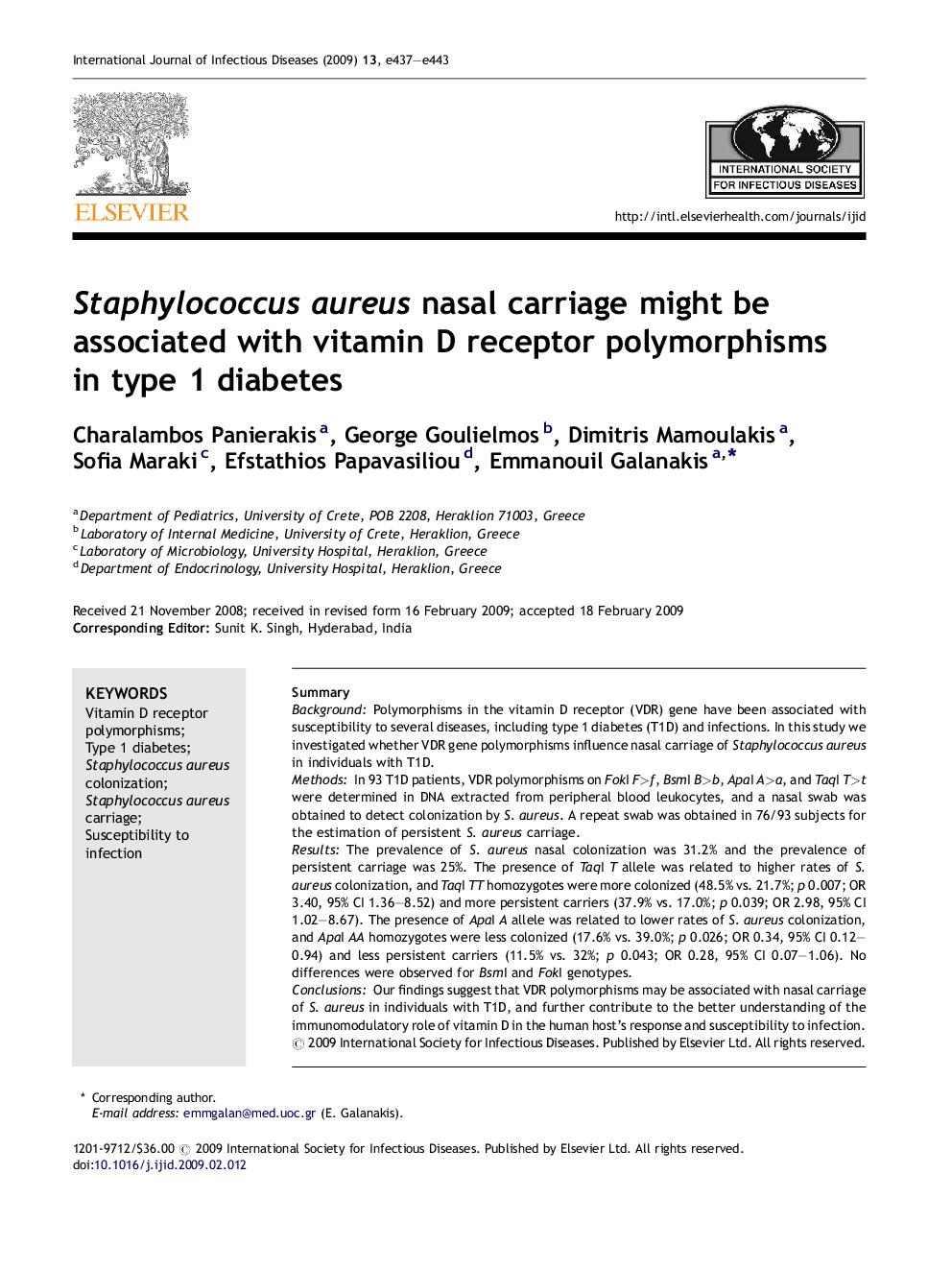| Article ID | Journal | Published Year | Pages | File Type |
|---|---|---|---|---|
| 3364531 | International Journal of Infectious Diseases | 2009 | 7 Pages |
SummaryBackgroundPolymorphisms in the vitamin D receptor (VDR) gene have been associated with susceptibility to several diseases, including type 1 diabetes (T1D) and infections. In this study we investigated whether VDR gene polymorphisms influence nasal carriage of Staphylococcus aureus in individuals with T1D.MethodsIn 93 T1D patients, VDR polymorphisms on FokI F>f, BsmI B>b, ApaI A>a, and TaqI T>t were determined in DNA extracted from peripheral blood leukocytes, and a nasal swab was obtained to detect colonization by S. aureus. A repeat swab was obtained in 76/93 subjects for the estimation of persistent S. aureus carriage.ResultsThe prevalence of S. aureus nasal colonization was 31.2% and the prevalence of persistent carriage was 25%. The presence of TaqI T allele was related to higher rates of S. aureus colonization, and TaqI TT homozygotes were more colonized (48.5% vs. 21.7%; p 0.007; OR 3.40, 95% CI 1.36–8.52) and more persistent carriers (37.9% vs. 17.0%; p 0.039; OR 2.98, 95% CI 1.02–8.67). The presence of ApaI A allele was related to lower rates of S. aureus colonization, and ApaI AA homozygotes were less colonized (17.6% vs. 39.0%; p 0.026; OR 0.34, 95% CI 0.12–0.94) and less persistent carriers (11.5% vs. 32%; p 0.043; OR 0.28, 95% CI 0.07–1.06). No differences were observed for BsmI and FokI genotypes.ConclusionsOur findings suggest that VDR polymorphisms may be associated with nasal carriage of S. aureus in individuals with T1D, and further contribute to the better understanding of the immunomodulatory role of vitamin D in the human host's response and susceptibility to infection.
